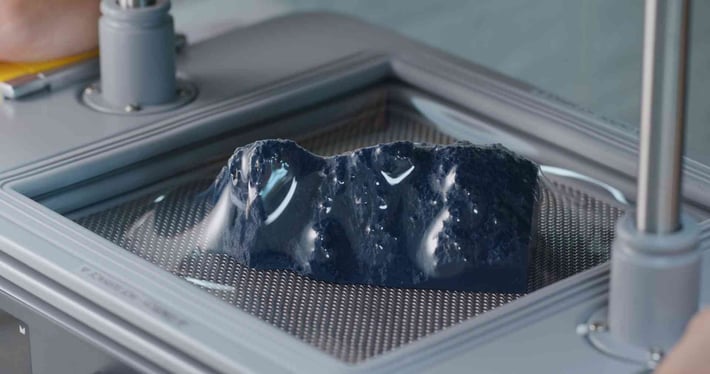
While injection molding services are often compared or even cross-shopped with vacuum forming, which is a specialized form of thermoforming. However, the two manufacturing processes are actually quite different, and each is uniquely optimized for different types of projects.
If you’d like to learn more about how the injection molding process works, check out our Brief Introduction to Injection Molding as well as our Plastic Injection Molding Services page. Or if you’d like to delve deeper into the advantages of injection molding specifically compared to vacuum forming, check out our comparison of the two processes below.The Vacuum Forming Process Briefly Explained
The vacuum forming process utilizes sheets of specialized thermoplastic materials, such as ABS and polystyrene plastics. The sheets are carefully heated and shaped over the product mold via vacuum pressure.
Put simply, the thermoplastic sheet is heated until the material is pliable, then it’s sucked down onto the mold, forcing the sheet to take shape. The vacuum pressure is released once the plastic cools and re-solidifies, leaving behind a solidly formed plastic product.
The Advantages that Vacuum Forming Offers Over Injection Molding:
- More design flexibility in the case of very large parts, e.g. automotive body panels, full machine enclosures, and industrial storage containers.
- A simpler manufacturing process, vacuum forming generally has lower initial tooling costs. In some cases, this makes vacuum forming more suitable for prototype manufacturing and extremely low-volume projects.
- Since material begins with a consistent wall thickness, many potential injection molding defects are prevented such as sinks and shorts
Plastic Injection Molding Services: A More Versatile Manufacturing Solution
Injection molding services offer numerous advantages over vacuum forming though. For one, the injection molding process is much more easily automated, making it more optimized and cost-effective for high-volume manufacturing. Injection molding is also better suited for the production of small, highly detailed parts with premium surface finishes.
- Part Complexity: Injection molding allows for the creation of highly detailed plastic parts with intricate designs, complex geometries, and precision tolerances. This advantage is especially evident when it comes to small part manufacturing. Vacuum forming is better suited for simpler shapes and less intricate designs, as well as larger parts. Further, the right tool can create through-holes and undercut features.
- Material Options: Injection molding is compatible with a wider range of material options than vacuum forming, which requires a more narrow range of specialized thermoplastics. This material flexibility gives you more options to optimize your products according to cost, performance, or market availability.
- High Strength and Uniform Thickness: Injection molded parts generally offer higher strength compared to vacuum-formed parts. The injection molding process ensures consistent material distribution and uniform wall thickness, resulting in stronger, more structurally reliable parts.
- Superior Surface Finish: Our custom injection molded parts have a smoother and more refined surface finish compared to most vacuum formed parts. The precision injection molding process imparts a high level of detail and surface finish quality, giving your products a more premium aesthetic.
One of America’s Leading Injection Molding Companies Since 1993
Located in the Denver, Colorado area, AIM Processing is backed by more than three decades of quality American injection molding services. We bring highly diverse contract manufacturing experience to the table, having served many unique industries and market segments – from consumer goods and electronic devices to specialized medical products and industrial equipment.

 SINCE 1993 MADE IN USA
SINCE 1993 MADE IN USA 

